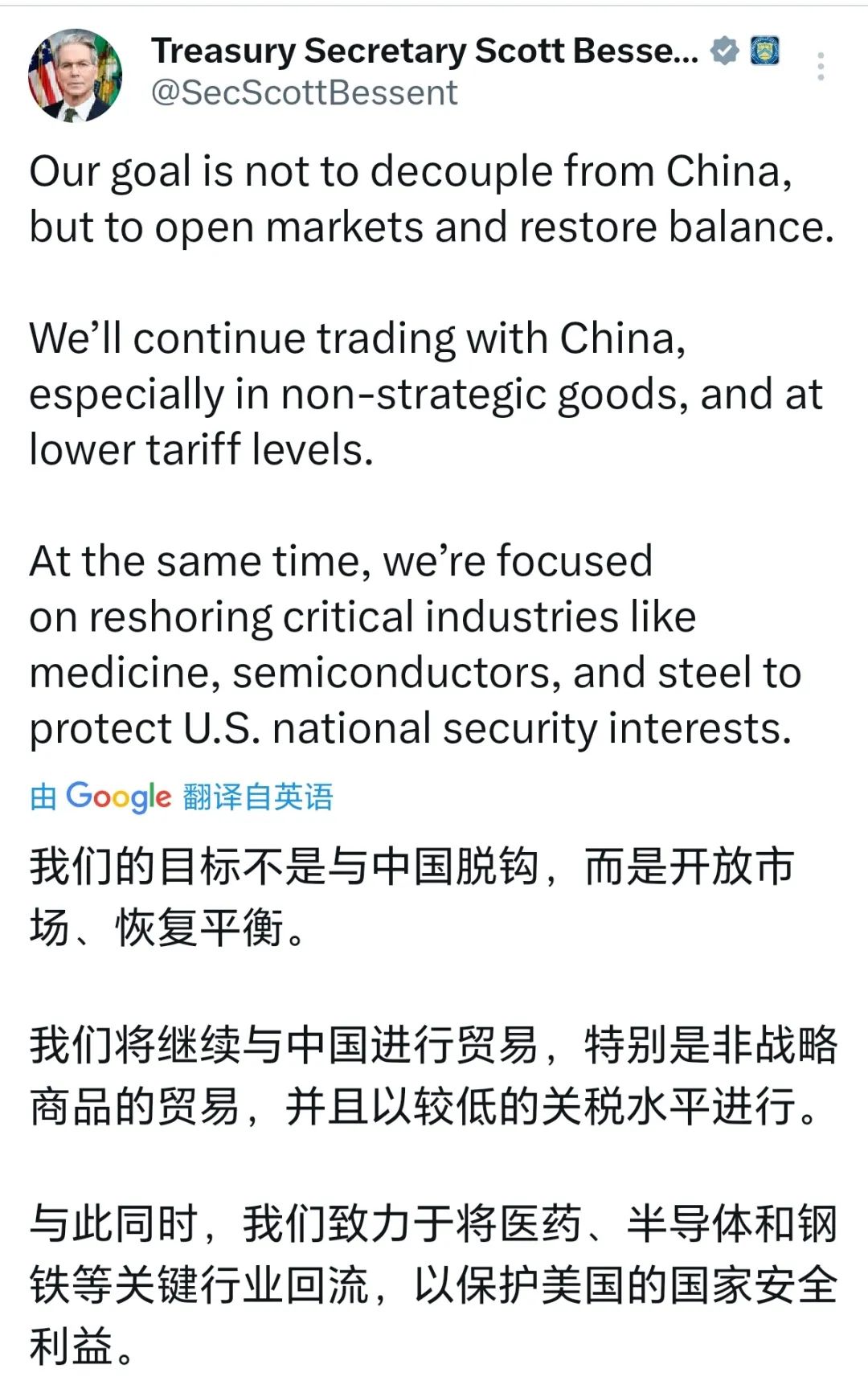US tariffs send another heavy signal! New opportunities for cross-border sellers
Created on 05.23

In 2025, the tariff policies of China and the United States have gone through many twists and turns. On May 18th, the US Treasury Secretary stated that he has no intention of decoupling from China and will maintain low tariffs on non strategic goods to China. This policy signal has relieved cross-border sellers who rely on China's supply chain. However, the long-term volatility of US tariffs and the challenge of cost shifting remain a sharp sword hanging over cross-border sellers.
1、 US Tariff Trends: Cost Challenges and Opportunities for Cross border Sellers
- Policy direction: hidden concerns behind 'tariff stability'
Low tariff commitment: The United States maintains a tariff rate of 10% -15% on non strategic goods such as daily consumer goods and home furnishings to alleviate short-term cost pressures for some sellers;
Policy fluctuation risk: The possibility of future adjustments to US tariffs cannot be ruled out, and sellers need to reserve a 10% -20% tariff buffer cost.

Cost transmission contradiction: survival in the cracks
Supply chain deadlock: Chinese made goods account for a significant proportion of Amazon SKUs, forcing tariff costs to be passed on to consumers, resulting in a price increase of 5% -8%;
Profit erosion: If the tariff rate fluctuates by 3%, sellers with a gross profit margin below 15% will face losses.
3. Structural opportunity: Key to breaking through high elasticity supply chain
Inventory turnover rate: The age of unsold inventory has been reduced to less than 45 days, resulting in a 20% decrease in capital utilization rate;
Multi warehouse collaboration: The proportion of domestic warehouse inventory has been increased to 50%, and priority has been given to overseas warehouses for tariff sensitive goods.
2、 Three strategies to break the deadlock: survival rules for the US tariff fluctuation period
- Multi platform layout to share risks
Main platforms: Amazon and Wal Mart undertake 60% of basic traffic and focus on high turnover standard products;
Emerging channels: Temu and TikTok Shop digest redundant inventory, increasing turnover efficiency by 40%;
Independent website matrix: Customized products have a premium space of up to 25%, avoiding platform price comparison pressure.
2. Construction of dynamic cost model
Tariff provision formula: commodity cost=(purchase price x exchange rate fluctuation coefficient)+(first leg freight x tariff rate x 1.2 risk buffer);
Price elasticity test: For products with a gross profit margin of less than 15%, the price fluctuation should be controlled within 3% to avoid triggering platform flow restrictions.
3. Three board axe for inventory health
Explosive graded stocking: S-level products (daily sales>100 pieces) are stocked at 3 times the safety stock, while C-level products (daily sales<10 pieces) are transferred to overseas warehouses for shipping;
Stagnation warning mechanism: Mark products with inventory age>45 days, automatically trigger clearance strategies such as "buy one get one free" and "full reduction";
Optimization of transfer rules: Transfer redundant inventory from European warehouse to US warehouse, reducing first leg costs by 18%.
3、 Cross border e-commerce ERP: the key to breaking through the tariff fluctuation period
E-warehouse ERP (cross-border e-commerce ERP) has docked with Amazon, Wal Mart, Temu, TikTok Shop, Shopify and other 60+platforms, and can solve cross-border sellers' U.S. tariff problems through core scenarios such as sales, inventory, and supply chain.
- Global Sales Compass: A data-driven decision engine
Multi dimensional monitoring: Yichang ERP calculates sales revenue, sales volume, and order volume based on platform, country, and store dimensions, and compares the same month on month trends;
Pending order processing: Flexibly set "push warehouse after platform shipment" to avoid invalid inventory occupation.

Inventory Compass: Multi warehouse visualization and turnover warning
Global inventory management: Yichang ERP supports one screen display of inventory data from domestic warehouses, official warehouses, and third-party overseas warehouses, accurate to nodes such as "procurement in transit" and "sellable inventory";
Health index: Calculate inventory turnover days based on daily sales, and calculate the value of goods by team, category, and person in charge.
3. Replenishment Management: Intelligent Supply Chain Regulation
-Three major replenishment modes:
Safety stock quantity: triggered replenishment according to a preset threshold, suitable for stable product categories;
Safety stock days: dynamically calculated based on daily sales volume (3/7/15/30 day sales weighted), with an error rate of less than 10%;
Dynamic time consumption days: Based on the delivery cycle and procurement cycle, the replenishment quantity is calculated, reducing the risk of out of stock by 40%.
-Intelligent transfer rules: EasyWarehouse ERP can prioritize detecting inventory in transfer warehouses and support allocating transfer quantities based on percentages, saving logistics costs by 15%.
The long-term fluctuations in US tariffs have become the norm, but with the help of Yicang ERP (Cross border E-commerce ERP), cross-border sellers can build a flexible control system and firmly grasp the initiative of growth!
Contact
Leave your information and we will contact you.


